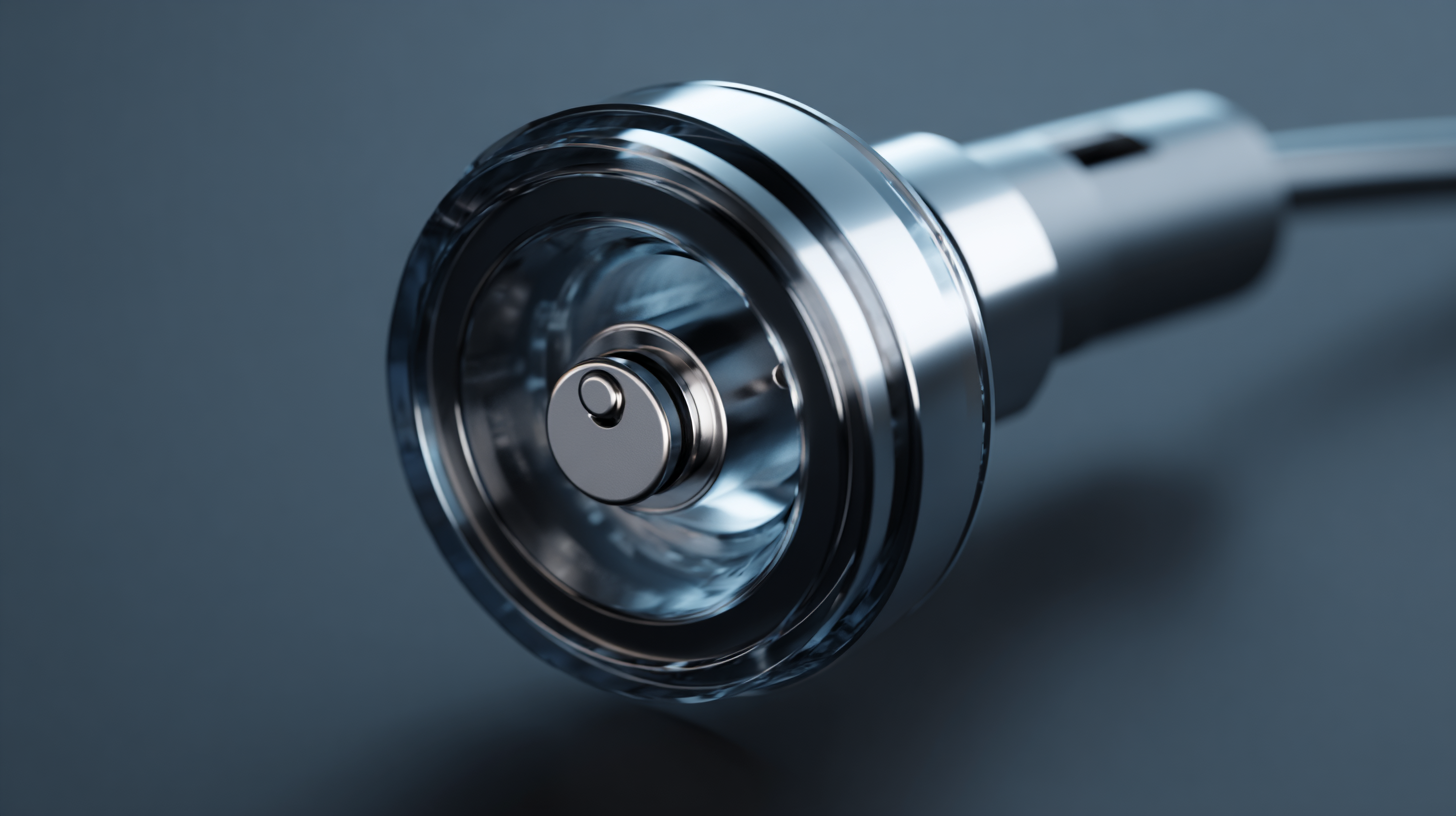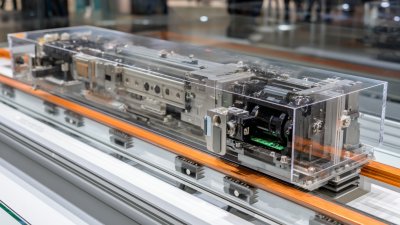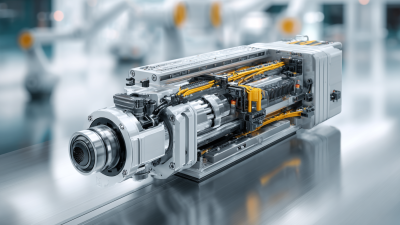Call Today: 916-259-1868
As we stand on the brink of a technological revolution, one component has emerged as a critical enabler of precision in various applications: the micro voice coil actuator. According to a recent industry report by MarketsandMarkets, the global market for voice coil actuators is projected to reach $1.5 billion by 2026, growing at a CAGR of 9.2% from 2021 to 2026. This growth is fueled by increasing demand in sectors such as automation, robotics, and consumer electronics, where miniature sizes and exceptional performance are paramount.

Micro voice coil actuators, renowned for their ability to provide rapid and accurate movement, are poised to transform the way devices operate, leading to enhanced functionality and user experience. As innovations continue to advance the capabilities of these actuators, understanding their implications will be crucial for tech developers aiming to stay competitive in this rapidly evolving landscape.
Micro voice coil actuators (MVCAs) are at the forefront of modern technological advancements, offering several key advantages that enhance their applicability across various industries. One of the most significant benefits of MVCAs is their ability to provide high precision and rapid response times. This is particularly vital in applications such as robotics, where quick and accurate movements can drastically improve performance and efficiency. Their small size allows for integration into compact systems without compromising functionality, making them ideal for devices like drones, medical instruments, and consumer electronics.
Another notable advantage of micro voice coil actuators is their energy efficiency. Unlike traditional actuators, MVCAs operate on low voltage and current, which not only reduces energy consumption but also minimizes heat generation. This characteristic is essential for battery-operated devices, extending their operational life while also ensuring safe functioning. Furthermore, the linear motion provided by MVCAs lends itself well to applications requiring delicate handling, such as in optical systems and imaging devices, where precise adjustments are crucial for optimal performance. These attributes continue to propel MVCAs into a prominent position within the realm of cutting-edge technology.
Micro voice coil actuators (MVCAs) are at the forefront of precision motion control technology. These compact devices operate based on the principle of electromagnetic induction, where a current passing through a coil generates a magnetic field, leading to movement when interacting with a permanent magnet. This mechanism allows MVCAs to achieve rapid response times and high accuracy, making them ideal for applications ranging from optical systems to medical devices.

When integrating MVCAs into your projects, consider the following tips: First, ensure proper thermal management, as these devices can generate heat during operation, which may affect performance. Secondly, pay close attention to the selection of the driving electronics; compatibility between the actuator and controller is crucial for optimizing response time and efficiency. Lastly, prototyping with various designs can help identify the most effective configurations for specific applications, allowing for enhanced performance and reliability.
The future of MVCAs looks promising, with advancements in materials and fabrication techniques. Researchers are exploring better magnet configurations and lightweight materials, which will lead to even more efficient actuators. As technology evolves, the scope for MVCAs will expand, unlocking new possibilities in automation and precision engineering.
The market for micro voice coil actuators is poised for significant growth by 2030, driven by advancements in technology and increasing applications across various sectors. As industries continue to prioritize automation and precision, the demand for compact and efficient actuation solutions is on the rise. The proliferation of consumer electronics, medical devices, and automotive systems, where micro voice coil actuators offer enhanced performance at reduced sizes, is particularly noteworthy.
Current trends indicate a shift towards miniaturization and higher efficiency within the actuator market. Innovations in materials and design are enabling the development of lighter and more powerful devices, allowing manufacturers to meet the stringent requirements of modern applications. By leveraging these technological advancements, companies are expected to expand their market presence, tapping into new opportunities in emerging markets. As a result, projections suggest that the micro voice coil actuator market will experience substantial growth, creating a dynamic landscape for manufacturers and consumers alike.
| Year | Estimated Market Size (in Billion USD) | Growth Rate (%) | Key Applications |
|---|---|---|---|
| 2023 | 1.5 | 8.0 | Consumer Electronics, Automotive |
| 2024 | 1.65 | 10.0 | Medical Devices, Robotics |
| 2025 | 1.83 | 11.0 | Telecommunications, Aerospace |
| 2026 | 2.03 | 12.5 | Industrial Automation, Surveillance |
| 2027 | 2.25 | 14.0 | Smart Home Devices, Virtual Reality |
| 2028 | 2.48 | 16.0 | Gaming, Drones |
| 2029 | 2.72 | 18.0 | Augmented Reality, 3D Printing |
| 2030 | 3.00 | 20.0 | Emerging Tech, Wearables |
The advancement of technology in the field of actuation has introduced a pivotal comparison between Micro Voice Coil Actuators (MVCAs) and traditional actuation technologies. Unlike traditional linear actuators, which often rely on bulky components, MVCAs are designed for precision, size, and efficiency. Reports indicate that MVCAs can achieve sub-millimeter accuracy, making them ideal for applications in robotics and prosthetics where minute adjustments are crucial. According to industry forecasts, the global market for voice coil actuators is expected to grow significantly, driven by their enhanced performance in sectors such as aerospace, automotive, and medical devices.
In human-centric domains, the importance of high dexterity and responsiveness in robotic systems cannot be overstated. For instance, the development of lightweight prosthetic hands with 19 degrees of freedom (DOF) leverages sophisticated actuators to mimic human hand movements accurately. The integration of shape-memory alloys reflects a trend towards more compact and efficient actuators that offer both strength and flexibility. Comparatively, while traditional actuators may fall short in terms of responsiveness and adaptability, MVCAs emerge as frontrunners in enabling advanced functionalities. This shift not only fosters innovation in robotics but also addresses societal concerns regarding the integration of automation into daily life, promising enhanced human-robot collaboration.
 Micro voice coil actuators (MVCAs) are becoming increasingly vital in the realms of robotics and automation, heralding a new era in precision engineering. Their ability to deliver rapid and precise movements makes them indispensable in applications ranging from robotic arms used in manufacturing to autonomous drones. According to a recent report by the International Federation of Robotics, the market for robotic systems is projected to reach $210 billion by 2025, with MVCAs playing a crucial role in enhancing the agility and functionality of these systems.
Micro voice coil actuators (MVCAs) are becoming increasingly vital in the realms of robotics and automation, heralding a new era in precision engineering. Their ability to deliver rapid and precise movements makes them indispensable in applications ranging from robotic arms used in manufacturing to autonomous drones. According to a recent report by the International Federation of Robotics, the market for robotic systems is projected to reach $210 billion by 2025, with MVCAs playing a crucial role in enhancing the agility and functionality of these systems.
In particular, one innovative use case of MVCAs is in haptic feedback technology, which is vital for training and simulation in robotic surgeries. By incorporating micro voice coils, these systems can reproduce the feel of real surgical tools, providing invaluable training experiences. Another promising application lies in the compact design of drones, where MVCAs can optimize stabilization and control even in turbulent conditions, improving the overall flight dynamics.
Tip: When considering the integration of MVCAs in your designs, focus on the size and weight specifications to maximize efficiency while ensuring reliability in performance. Additionally, evaluate the actuator’s power-to-weight ratio, as this is critical for applications involving mobility and precision.






Sierramotion engineers help customers design solutions to complex motion problems. Whether a simple coil, or a precision motion assembly working in vacuum, Sierramotion has the experience to create a solution that works the first time.